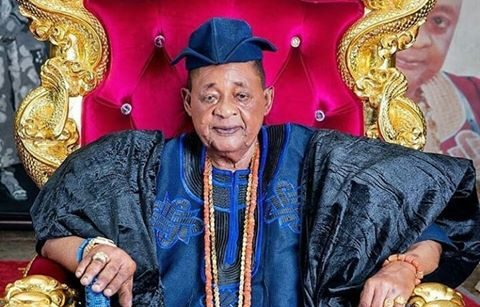In recent times, some traditional activities that have been in existence for over 400 years have been termed barbaric. This is because some of these activities, especially rites and sacrifices, are harmful, and because civilization has taken a toll on the lifestyles of people, these activities are of no use. Thus, they have become “moonlight stories” that are told to the younger generation rather than experiencing or witnessing them firsthand.
The death of the Alaafin of Oyo, Oba Lamidi Adeyemi III, in 2022 has raised eyebrows—there were comments and threads on social media with opinions and questions about the ‘Abobaku’ absconding, in order not to be buried with the king.
Who is Abobaku? What is the history behind Abobaku? Why does he have to die with the king? Do we still have Abobaku in the Yoruba traditional system?
In this piece, Naijabiography explores the history of Abobaki in the old Yoruba empire and the reason why he had to die with the king.
History
There once was an Abobaku, whose obligation was to pass away with his master, the King, about 400 years ago. The Abobaku was to be buried alive with the king when he or she passed away. The old traditional courtesy has it that the people would experience severe misfortune if the Abobaku was not interred with the king.
History also has it that it was only the Old Oyo Empire that had the term “Abobaku,” which means “He who dies with the king.” However, some of the Yoruba climes, like Ile-Ife, never used to imbibe the practice.
Meanwhile, the idea behind Abobaku was an insurance policy of some form for Alaafin; it aimed to foster a strong, permanent bond of allegiance between the King and his dependable general. Alternatively, Abobaku would use any means to keep the monarch alive. Alternatively, he would be interred next to him.

Although some historians believe that the history of Abobaku can be traced to when kings were being poisoned frequently by their Aremos working together with their domestic workers, then they realized they needed to devise a method to stop the menace. Hence, the practice of Abobaku was developed.
Thus, this custom dates back to the ancient Oyo Empire, when the Alaafins of the Empire were famed for imposing their tyranny with great force over numerous villages. Also, among the Yoruba climes, the Oyo Empire dominated, so as a result, other towns desired independence from Oyo, especially during wars.
In those years, the major role of the Abobaku was to secure the Alaafin’s safety during those wars. In short, Abobaku, who frequently serves as a war general, would rather die or perish than see Alaafin perish. For instance, during the demise of Alaafin Atiba, who was the first Alaafin in the old Oyo empire, over 21 people were buried alive with him. Research also shows that this practice has caused wars in the past.
However, there was a particular king who passed away in 1980—he was the predecessor of Olubuse II, and he had no one to be buried with him. Thus, no calamity was recorded after 7 days—the monarch is expected to be cremated within those days.
The Colonial Masters arrived soon after, while this was going on. The white males who arrived during the Colonial era with the intention of commercializing the region were concealed behind religion. A translator was required because it was challenging to grasp the white man’s language. Therefore, the Abobaku was, at that time, the best interpreter in the neighbourhood.
Then, Abobaku continued to be the only person providing interpretation for the white men as they moved about the town. He became important to the white men in their difficult mission within a short period of time. The Oba then passed away, and within a week, he was to be laid to rest.
The Abobaku, therefore, has to be ready to say goodbye to the world. When his superiors heard about this practice, they came up with a plan to protect him because he was an essential tool to them. Suddenly, on the second day after the King’s demise, police officers showed up at his house, accusing him of stealing a goat. The Abobaku was sentenced to life in prison the same day he was arrested, and the king was supposed to be buried within seven days, according to custom.
The palace chiefs realized on the sixth day that the Abobaku would not be available for the seventh-day assignment since he had been given a life sentence, and it was decided that a live cow should be used instead because, according to custom, no other human being could replace him. The Abobaku was not interred alongside the Oba. Unexpectedly, nothing disastrous occurred. So, this was the event that led to the abolition of the offensive tradition in Yorubaland. This is why the Yorubas have an adage that “eni oyinbo feran ni ti mole” (whoever the white man loves is being caged).

Abobaku in the Old Oyo Empire
In Yoruba culture, the Abobaku is a chieftaincy position. He is chosen to serve as the village or community’s chief, deriving from a specific family. The Abobaku has a tremendous number of privileges and luxuries. He even consumes the king’s food and drink and is constantly around or with the monarch. He dies when the king dies, despite all of his comforts and pleasures. He is interred in the same grave as the king. While he knows this, he takes pleasure in it all while it lasts. It is important to note that this is directly related to a king’s funeral procedures.
Abobaku in the Modern Oyo Empire
Several controversies ensued recently when Alaafin of Oyo died and social media took to the history of Abobaku. However, it is worthy of note that the Abobaku custom has been abolished since 1935, during the advent of colonization. Also, research has shown that to replace the Abobaku with a big cow that is being buried with the king.





